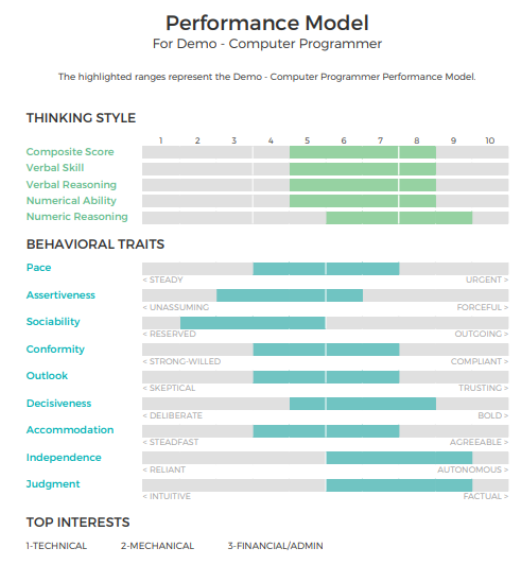How Can You Hire for the Future? | January 2023

It’s hard enough to make the right hiring decision in the moment, but don’t forget that people change, evolve, and adapt. You need to hire for the long haul. However, finding candidates who will be great hires not just today, but also tomorrow, isn’t exactly easy.
So, how can you anticipate how someone will perform down the road? How can you be confident you’re adding another player to the team who will turn out as great as your best performers?
How to Predict Future Job Success
Using a hiring assessment, like our PXT Select™, can help you determine what success looks like in each role for which you hire – and we’ll show you how using our three-step process for replicating top performers.
1. Identify and assess top performers.
To envision the qualities of a successful new hire, it helps to take a closer look at your current top performers to gauge their cognitive abilities (thinking style), behavioral traits, and occupational interests. Identifying top performers is easy; the challenge is figuring out their recipe for success so you can find new team members who bring similar ingredients.
Our process is simple yet effective. First, analyze the specific role for which you’re hiring. Then determine what it takes to succeed in that role – not only considering experience and educational background, but by assessing the cognitive, behavioral, and interest characteristics of your top performers in that role with the PXT Select assessment.
2. Create a performance model.
To create a performance model entirely from your own specific employee data, you’ll need data from a significant sample of employees in that position. If, for example, you have at least 30 IT security people on staff, you’ve got what’s needed to build a performance model for an IT Security role. If you don’t have that information, PXT Select’s performance model library has models for many roles and we can help you create customized models if necessary.
In the example below, the model shows the various Thinking Style attributes, Behavioral Traits, and Top Interests that fit best with the sample job role. Note the shaded areas – they represent the performance model’s suggested range on any given trait. The goal is to find candidates whose traits fall within these defined ranges.

3. Evaluate candidates against the model.
The next step is to assess job candidates to see how well they fit into the performance model. In the PXT Select solution, candidates take a computer-adaptive assessment. The aim is to quickly and accurately narrow down where the candidate fits a particular attribute. The candidate is presented with a moderately difficult question – a correct answer leads to a more difficult follow-up question while an incorrect answer triggers an easier question. That’s the adaptive part and the process continues until the algorithm is confident it has a good score for each attribute.
How to Identify Job Fit
When the candidate completes the assessment, you get a comprehensive individualized selection report for the candidate’s Job Fit for the specific position. It provides an overall fit score for the candidate and the job role and breaks down the scores into three categories (see the one-page excerpt below). You’ll also see how the candidate scores in each attribute letting you identify which specific attributes are the challenge areas.
